Piecing together a marketing budget is a confusing and often contradictory process.
For starters, there’s the age-old chicken and egg problem: We need growth to earn money but need money to fund growth. Then there’s choosing between dozens of distribution channels and hundreds of metrics.
Where do we start?
Experts say marketing spend should be roughly 10 to 12-percent of total revenue, but even that prescription is hardly useful. Marketing budgets vary drastically from industry to industry, averaging as low as 4-percent for energy and as high as 24-percent for consumer goods.
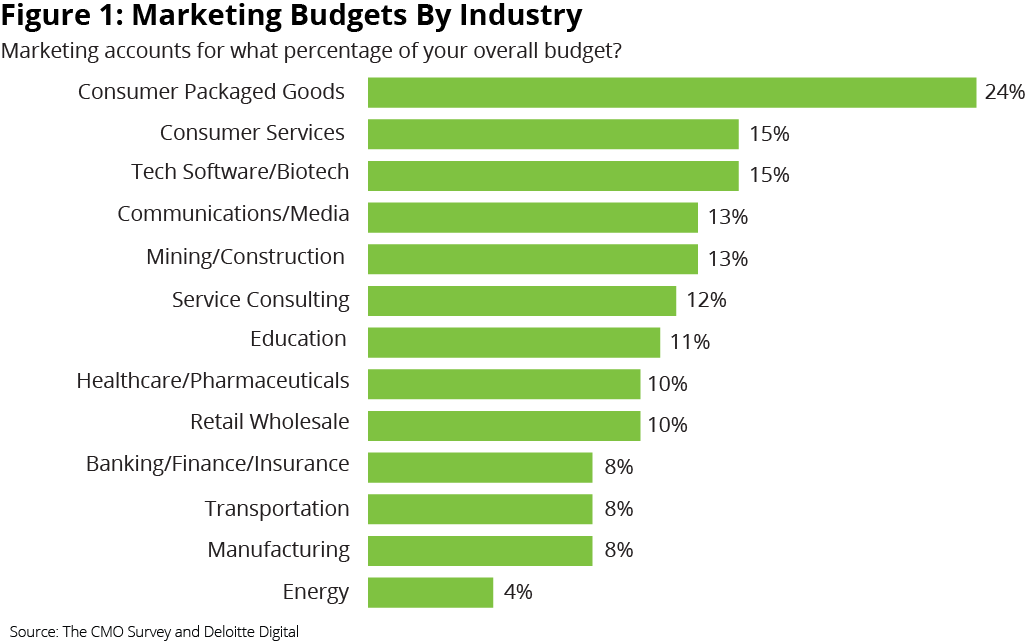
Software as a service (SaaS) companies can actually go even higher than shown here. Many businesses are allocating a staggering 53% of their total revenue on marketing.
So how much should you spend on marketing? It depends on a number of factors, among which are: industry, business stage, competition, market share, customer demographics, quality of your data, and a whole lot more (which we’ll get into later).
For the purposes of this article, we’ll be dealing strictly with how online marketing analytics can be applied to planning a marketing budget, in particular, how understanding things like conversion rates, cost per click, and keyword analysis can help companies lower marketing costs.
A brief introduction to marketing analytics
How do you ascribe value to an eye-catching video or a compelling article? By what measure can you calculate the effectiveness of a sales funnel or the persuasiveness of an email?
Marketing analytics allows us to explain and interpret marketing data in simple, quantifiable terms. Using it, we can see where customers are, where they’re headed, and gauge how well a particular marketing activity is doing.
What is marketing analytics?
Marketing analytics is defined as “the practice of measuring, managing, and analyzing marketing performance to maximize its effectiveness and optimize return on investment (ROI).” It aims to answer the all-important question: Is a marketing strategy/activity effective, why or why not?
How is marketing analytics related to my budget plan?
The first step in creating a proper marketing budget plan is understanding each component that goes into it. Apart from knowing how much it costs to make an item or ship it, you need to be able to project with reasonable accuracy the size of the market you’re catering to, the typical conversion for products in your niche, the average revenue per website visit, and a host of other factors. It’s a lot to take in, but analytics can give you all of this data and much, much more—in an instant.
The more accurate and data-driven you are, the more efficiently you’ll be able to plan your marketing budget. For example: How much does a cost per click (CPC) campaign cost? How many clicks are you aiming for? What social media platforms are you looking to advertise on? What’s the price per impression?
Following a marketing budget in detail, as shown below, will show you exactly where your marketing dollars are being spent.
You’ll notice in the image above that each item is accounted for accordingly, and that budgets are compared directly against actual money spent. This visual is particularly helpful because you can see whether you’re overspending or underspending and whether the budgets you set are accurate.
Taking this a step further using an analytics tool like Google Analytics or Databox Free KPI Dashboards, you’ll be able to monitor which efforts are paying off and which aren’t. For example, does your blogging spend to justify the organic traffic you’re receiving? Are your gains from email marketing commensurate to the amount you spend on email automation?
Marketing analytics tools give you real-time feedback, allowing you to tweak your marketing strategies on the go. This often results in marketing dollars saved and spent efficiently.
Creating a marketing budget using analytics
Now that we’ve established the role of analytics in planning a marketing budget, here are some things tips to get you started:
1. Align your marketing strategies with larger business goals
Successful marketing begins with two things: (1) defining your business goals and (2) building your marketing strategies around those goals to increase online sales.
Marketing is a means to an end—usually a purchase, subscription, download, or any other factor directly correlated to your bottom line. Yes, SEO, blogging, social marketing, and email campaigns are all nice to have, but what matters most is how these initiatives further your brand’s main goals.
For instance, a startup shoe company that sells “men’s running shoes” may maintain a website, own a blog, handle several social media accounts, and even implement an email marketing strategy.
So what’s the purpose of all this effort? The answer is clear as day: sell more running shoes. If a particular marketing strategy isn’t serving that goal or generating more revenue, then it’s probably best to consider another approach.
Remember, your marketing strategies should adjust to your business goals, never the other way around. As we mentioned earlier, marketing, important as it is, is just a means to an end; it’s ultimately the end (i.e. your bottom line) that matters. Keep this in mind and you’ll save yourself the trouble of running marketing campaigns that simply don’t help your business grow.
A quick aside: unlike Nike, Adidas, and other shoe giants, startups usually don’t have the marketing capital to invest in billboards, TV ads, and other traditional mediums—that’s why most of their marketing dollars are spent online. If you’re running a startup of your own, consider looking to online channels for rapid yet affordable opportunities for growth.
Track the right KPIs
It isn’t enough to build your marketing strategies around your business goals. You also need to plan your marketing initiatives around relevant key performance indicators or KPIs.
A KPI is essentially a value (usually a number) that measures business progress. These may come in the form of sales targets, marketing conversions, new hires, or practically any performance-related metric a business wants to keep track of.
Here are some questions worth asking:
- What is your desired result?
- How can you measure progress?
- What activities generate the greatest returns?
Or more specifically:
- Do blog views drive purchases?
- Which channels generate the strongest customer responses?
- Is social media an effective platform for customer acquisition?
The reason top growth marketers enjoy high-performing marketing campaigns is precise that they know which KPIs to track and which to leave alone. First, figure out which results matter to your company and look for ways to measure them. After all, you don’t want to get stuck measuring every metric only to find out that the majority of them do nothing for your bottom line.
Here are examples of effective KPIs:
- Sales growth
- New customers
- Number of qualified leads
- Monthly subscribers
- Lead-to-sale conversion rates
- Cost per client per channel
- Customer turnover rate
There are many more KPIs you can consider but that’s another topic for another day.
Having the right KPIs in place allows you to accurately determine whether your campaigns are performing or underperforming, and give you insight on things that need to be improved, changed, or maintained.
The easiest way to test the relevance of a KPI is by reverse engineering your buyer’s journey (or flipping over the sales funnel, as shown in the image below). Map out the different steps customers take beginning from the close all the way to the first encounter. You should be able to see which steps yield positive results and which don’t.
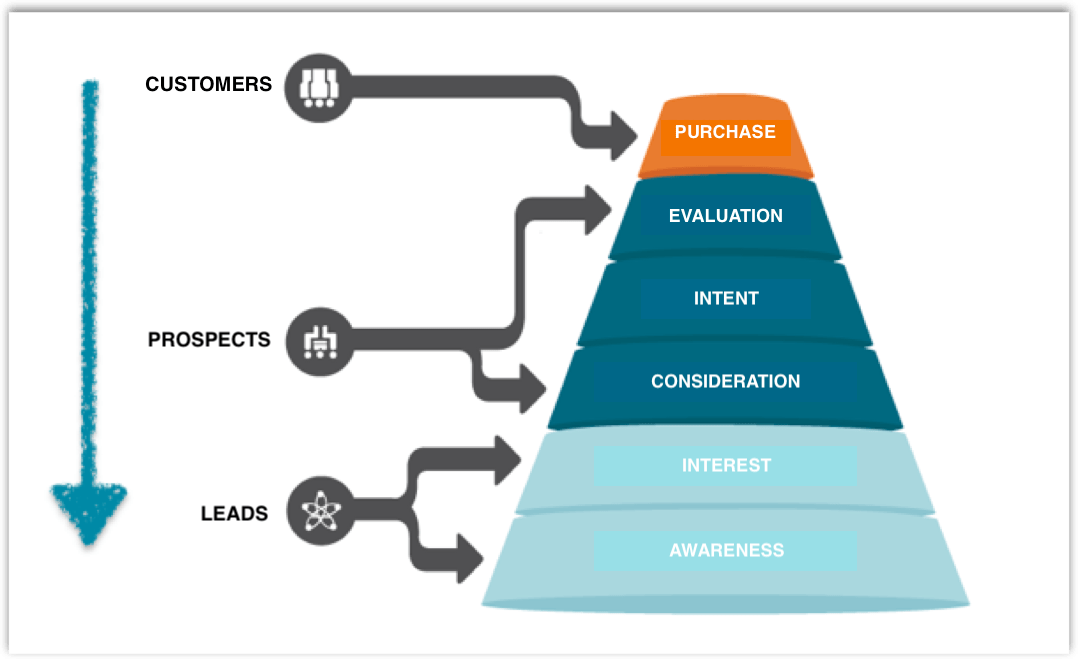
Eventually, you’ll be able to weed out underperforming strategies and exclude them from your final budget plan.
Be S.M.A.R.T.
S.M.A.R.T is a goal-setting methodology that advocates for specific, measurable, agreed upon, realistic, and time-based goals. Any well-thought-out marketing budget plan (or any plan for that matter) should contain these five essential elements.
Here’s why:
Specific
When defining your goals, be as specific as possible. Are you aiming for more blog subscribers? Social media followers? Software downloads? Email conversions?
Setting specific goals allows you to narrow down your marketing initiatives and direct your energy towards efforts to help you achieve what you want to achieve. For example, if your goal is to gain 100 new Instagram followers every month, then it may be best for you to focus on creating content on Instagram and not Facebook or Twitter.
Measurable
The only way to find out if a marketing campaign is successful is...to actually find out. Set goals that are easy to track and measure, preferably ones you can monitor in real-time.
Check out this awesome list of the best online marketing tools. These tools allow you to automate certain functions like email blasts, backlink audits, website monitoring, and page speed optimization while helping you keep track of your chosen metrics.
Agreed Upon
Set marketing goals that your team agrees with. Otherwise, you won’t be getting quality data for your sales team, or the best out of everyone involved. If anyone happens to disagree with you, find out why and convince them nicely. But above all, listen—they may just be right.
Realistic
While it’s great to set ambitious goals every now and then, it’s important to always stay grounded in reality. A realistic goal might be to grow blog subscriptions by 150 users every month, whereas an overly ambitious one may be to gain 5,000 Facebook followers in under an hour. A reasonably ambitious goal, on the other hand, may be to double or even triple email conversion in two months.
Crawl before you walk and walk before you run. Some things take time.
Time-Based
There’s an old saying that goes “a goal without a deadline is just a dream.” As a marketer, you want to be focused on doing, not dreaming, so give your project an appropriate time frame and set milestones with corresponding due dates.
Think of a milestone as a smaller component of a larger task. For example, you may want to break down blog writing into several, more manageable items like:
- Outline
- First draft
- Proofreading
- Revision
- Publish post
- Share on social media
Apps like Asana and Trello let you break down each task into workable milestones and set deadlines for each of those components. These really help, especially when you’ve got multiple responsibilities on your plate.
Iterate and improve
Marketing is far from an exact science. Unlike the laws of physics or chemistry that remain constant throughout the universe, what works for one company may not work for yours. Often, you’ll find yourself tweaking, experimenting, and calibrating every little step before you can figure out what works for you. It’s a cumbersome process, but one that usually rewards those patients enough with compounding improvements.
The most straightforward way to improve your marketing campaigns is by performing A/B Testing, i.e. directly comparing two versions of a web page, app, or any piece of content to see which one performs better.
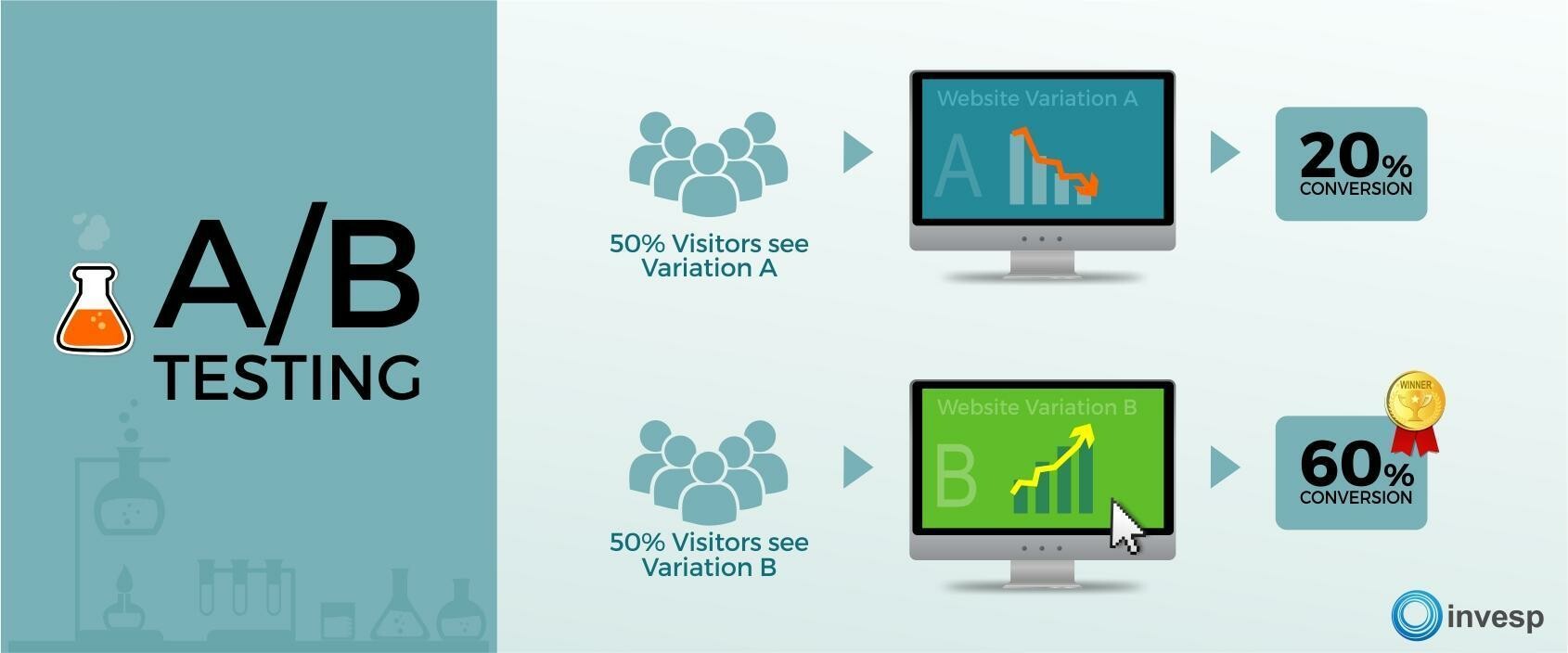
Ideally, you’ll want both versions to be as similar as possible save for a single element so that whatever performance difference you observe can be attributed directly to that one element.
Experiment by changing the color of your CTA buttons, or the fonts of your articles, or the configuration of the navigation bar. As you go along, you’ll be able to optimize each component of your marketing campaign for maximum performance.

Tools you can use
As you may have already gathered, it’s virtually impossible to perform all of these things manually. In this next section, we’ll talk about different tools you can use to optimize your marketing campaigns, ranging from the free to the high-end.
Google Analytics
With over 3.5 billion searches logged every day, Google is the widest-reaching search engine in the world.
Google Analytics gives you access to all of Google’s search data for free (unless you’re using the 360 version that sells for $150,000 annually). The tool allows you to track all kinds of data from page performance to search volume to pageviews to conversion to keywords and much more.
The only downside is there are too many things to look at that a non-tech person can easily get overwhelmed. But that’s just nitpicking.
Online marketers should leverage Google Analytics so that they can keep track of their online data in real time. Just by looking at the numbers, they’ll be able to pinpoint crucial areas where performance can be improved and where money can be spent more wisely.
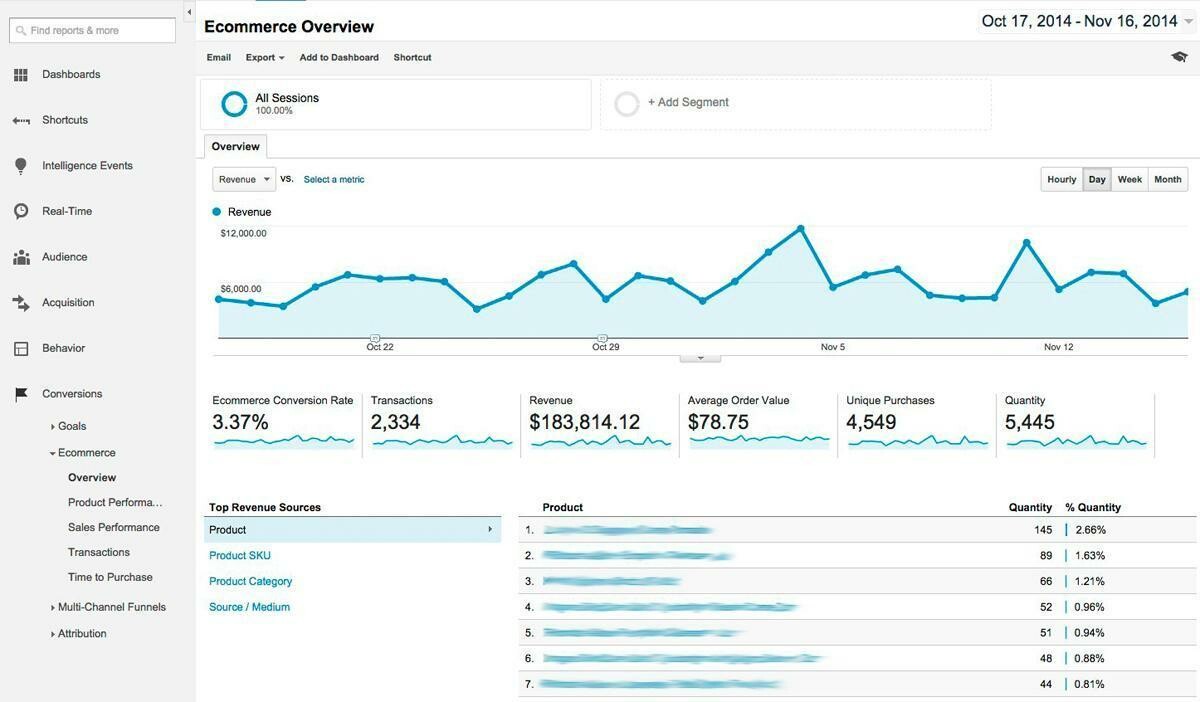
Facebook Analytics
If Google is the king of search, then Facebook is the king of social media. As of late 2017, Facebook reported 2.2 billion active monthly users, and the number is growing every year.
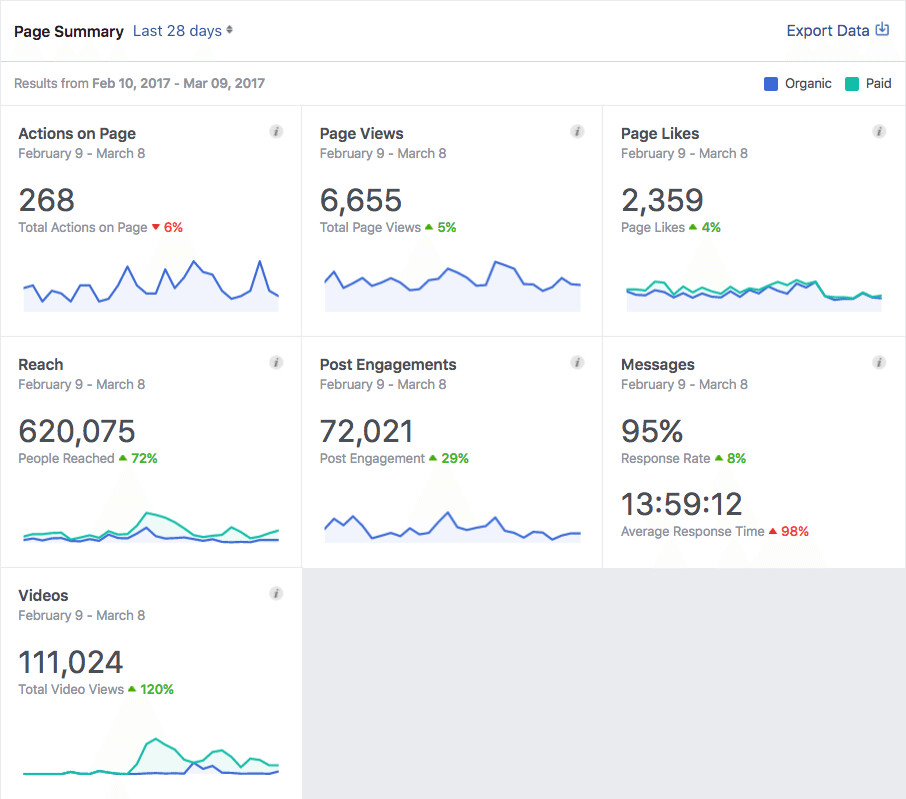
Facebook Analytics is an all-in-one social marketing tool with a lot of features, including engagement analytics (i.e. likes, shares, and comments), reach, and page views. But what’s really cool about it is the fact that you can target people based on their interests, pages they follow, or even brands they engage with. It’s targeted marketing but on a whole different level—and, like Google Analytics, it’s completely free, except for the ads you pay for.
SEMRush
SEMRush is arguably the most potent keyword research tool in the market, capable of high-level keyword analytics and so much more.
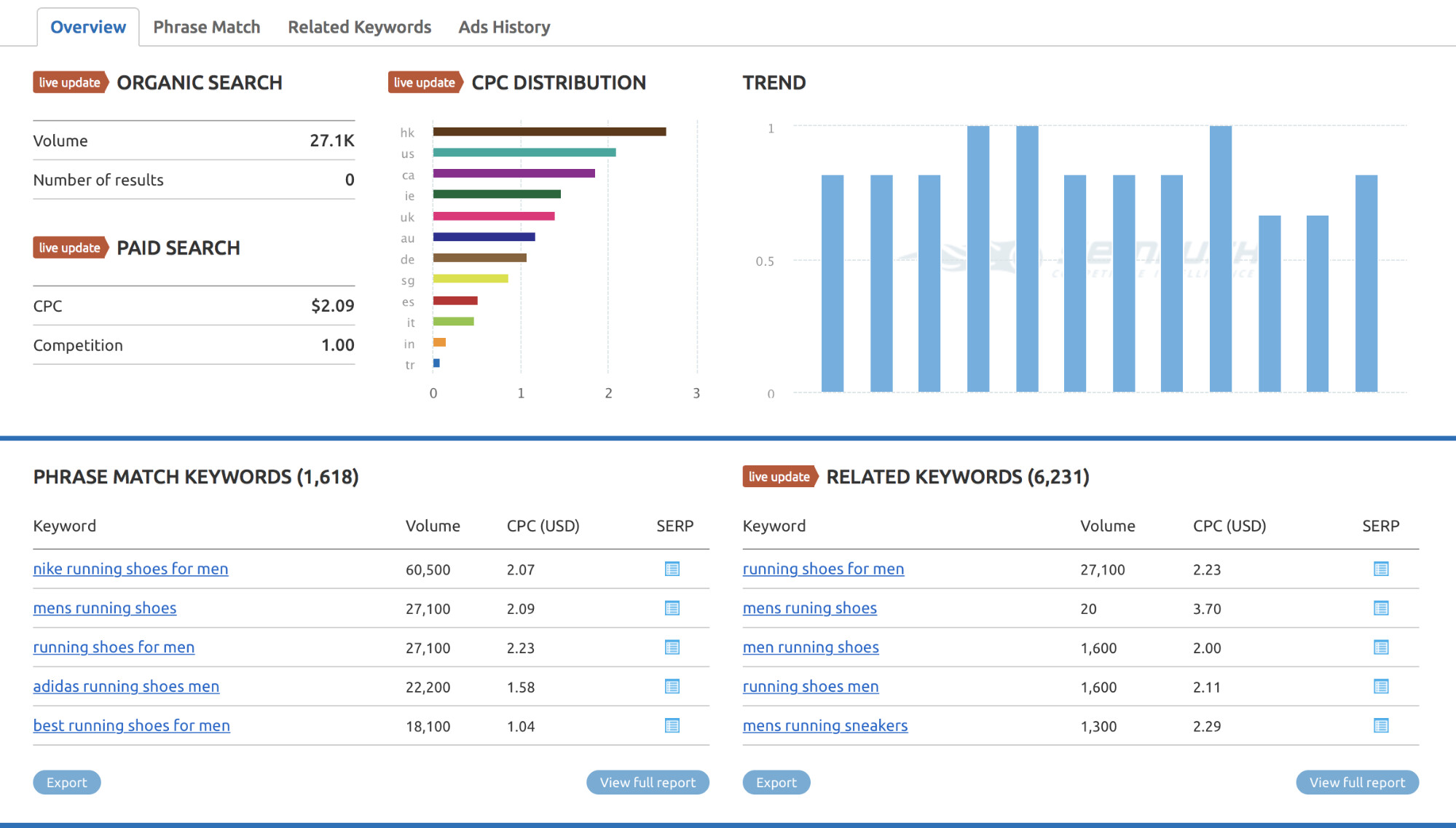
SEMRush not only gives you the data for keywords but also suggests phrase match keywords, related keywords, and LSI (Latent Semantic Indexing) keywords. Moreover, it is capable of doing full website SEO audits, content planning, position tracking, and so much more.
Prices are $99.95, $199.95, and $399.95 for the Pro, Guru, and Business plans, respectively. Plus, they also offer custom pricing for enterprise solutions.
Wishpond
A competitive platform for all things inbound marketing, Wishpond is one of the most complete and comprehensive online marketing platforms you can find.
It fills many of the inbound and marketing automation holes left by the other platforms you may have tried before: landing pages, popups, contests, sales funnels, email sequences, email marketing, marketing automation, contact management, and so much more. Not only that, it’s a platform that allows you to work seamlessly with the different members of your team.
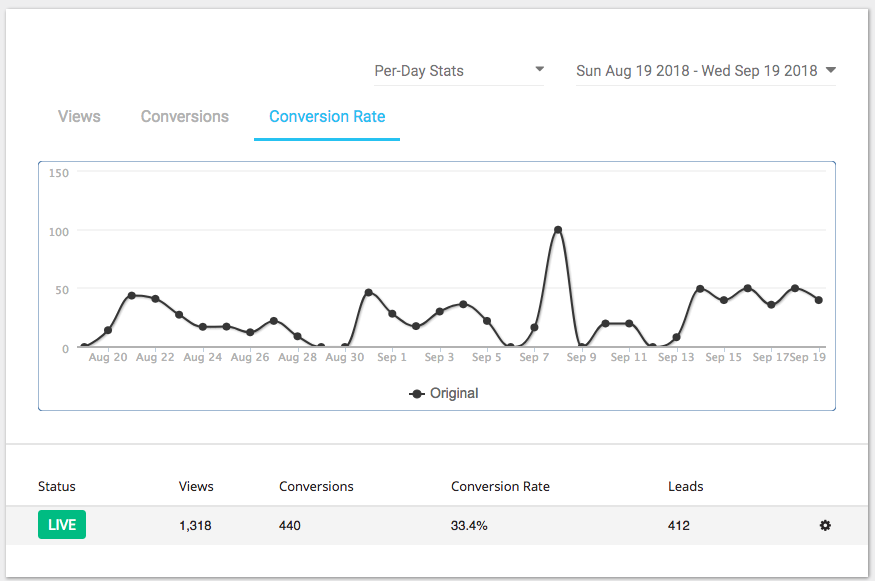
At $49 for the Starter plan, $99 for the Basic plan, and $199 for the Professional plan each month, it’s significantly cheaper than its competitors, which is just a little bonus you can take to the bank.
A budgeting thought experiment
We all know that it’s impossible to predict the ROI of a particular marketing initiative with 100-percent accuracy. Having said that, you can at least make a reasonable forecast using marketing analytics data like impressions, page views, keyword volume, conversion, social media engagement, and the like. Let’s use a PPC (pay per click) campaign for the previously mentioned startup selling “men’s running shoes” (e.g. Altra or Carson Footwear) as an example.
Suppose your goal is to gain 500 new customers. The average conversion rate for all websites hovers between 2- to 3-percent (though the top 25-percent of websites convert at much higher rates). For purposes of this exercise, let’s stick to the average conversion.
Computing for a PPC budget can be done as follows:
Traffic goal = customers needed/conversion rate
Then...
Traffic required * CPC (cost per click) = total budget
Here’s how much traffic you’ll need to generate 500 new customers:
conservative traffic goal = 500/2% (conservative conversion)
conservative traffic goal = 30,000
optimistic traffic goal = 500/3% (optimistic conversion)
optimistic traffic goal = 20,000
Now let’s take a look at CPC values from Google’s Keyword Planner for our chosen keyword:

As you can see, the CPC for “men’s running shoes” and its related keywords ranges between $0.12 and 1.11. You’ll want to set a range of $0.10 to 1.2 to provide some allowance.
Inputting our traffic goals into the budget formula, we get:
maximum budget = 30,000 (conservative traffic goal) * $1.2 (highest CPC)
maximum budget = $36,000
minimum budget = 20,000 (optimistic traffic goal) * $0.10 (lowest CPC)
minimum budget = $2,000
$2,000 to 36,000 is quite a range, but it allows you to set your budget expectations depending on how conservative or optimistic you are. Now, if your website yields a much higher conversion than 2- to 3-percent, then you’ll probably need even less traffic to get to 500 customers.
Let’s take this exercise one step further and compute for ROI, or in this case ROAS (return on ad spend). If the average order is worth $300, the computation for ROAS should be as follows:
expected revenue = average order value * new customers
then
ROAS = (expected revenue - budget)/budget
Plugging in our previous values, we get:
expected revenue = $300 * 200 new customers
expected revenue = $60,000
Based on our conservative and optimistic estimates, ROAS should be:
conservative ROAS = ($60,000 - $36,000)/$36,000
conservative ROAS = 66.67%
optimistic ROAS = ($60,000 - $2,000)/$2,000
optimistic ROAS = 2900%
Again, 66.67 to 2900-percent is still quite a range, but it gives you an idea of how much you can earn given a conservative prediction versus an optimistic one. Also, note that your choice of keywords matters — here are some tips for finding and organizing profitable keywords.
The example above is just one of the many ways you can use analytics for budget analysis. As you go along, you’ll discover many more tools like Wishpond, SEMRush that will allow you to nail your marketing budget down to a T.
Parting Thoughts
If you’re looking to boost your marketing strategies and cut costs along the way, analytics is definitely something you want to have in your toolkit. As you gain experience, you will have to not only grow in knowledge but invest in software and additional infrastructure as well, in which case you might want to consider financing through a small business loan. I truly believe marketing and sales is the last area you should cut from your budget because it’s directly related to cash-generating activities.
Marketing analytics is practically a godsend for marketers! Aside from the fact that it eliminates the uncertainty surrounding KPIs, ROI, and other metrics, it’s also a valuable tool that enables marketers to better plan their budgets.

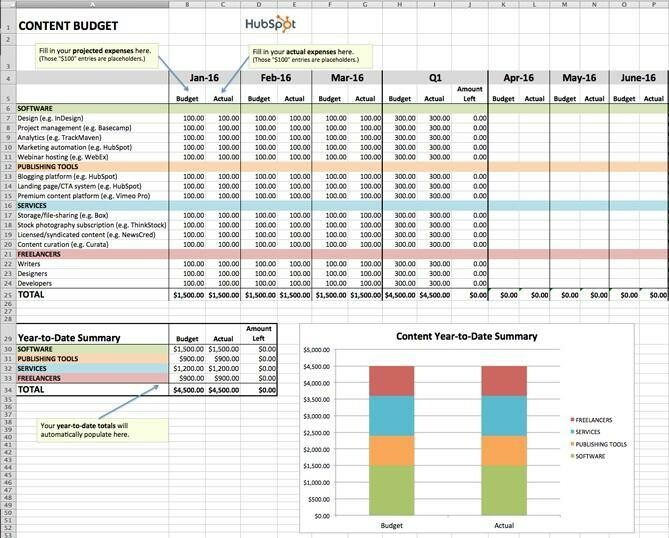

No comments:
Post a Comment